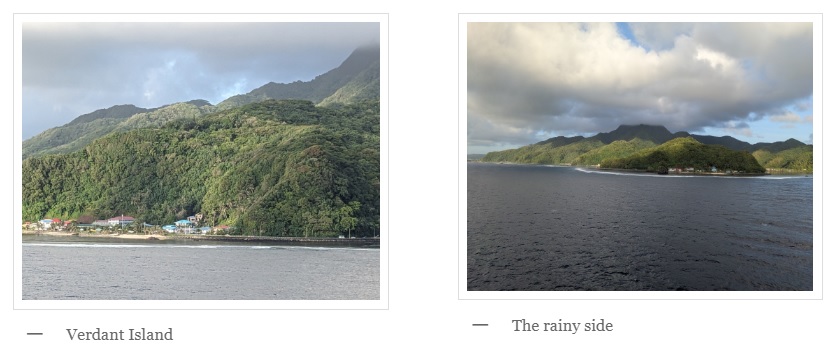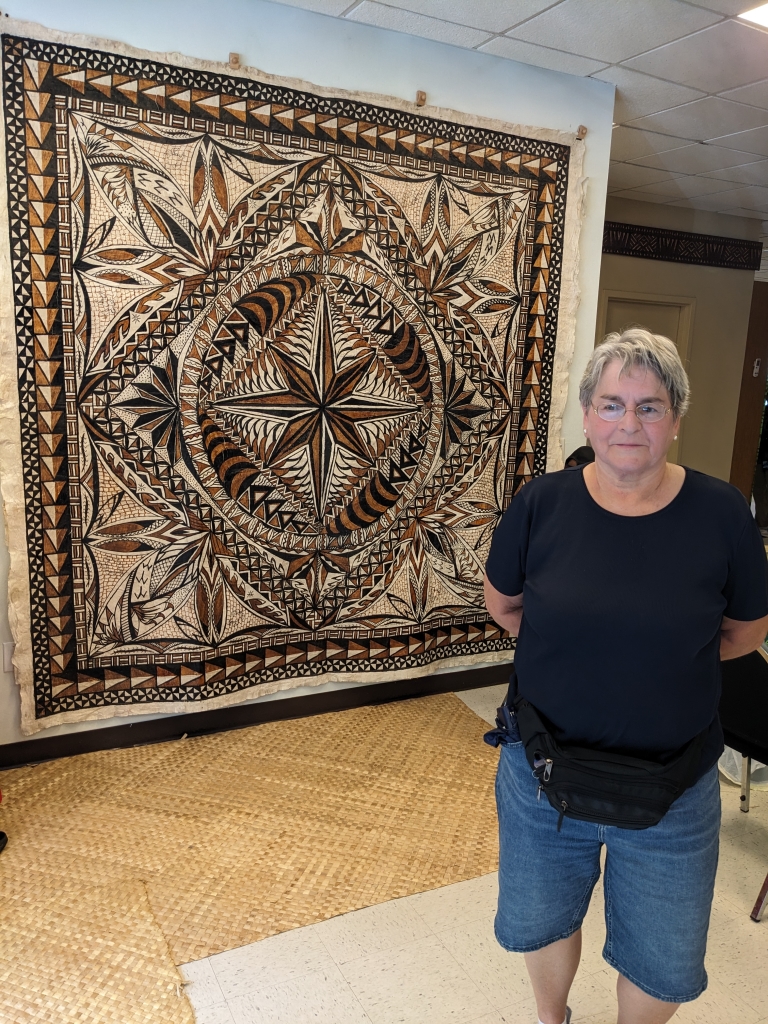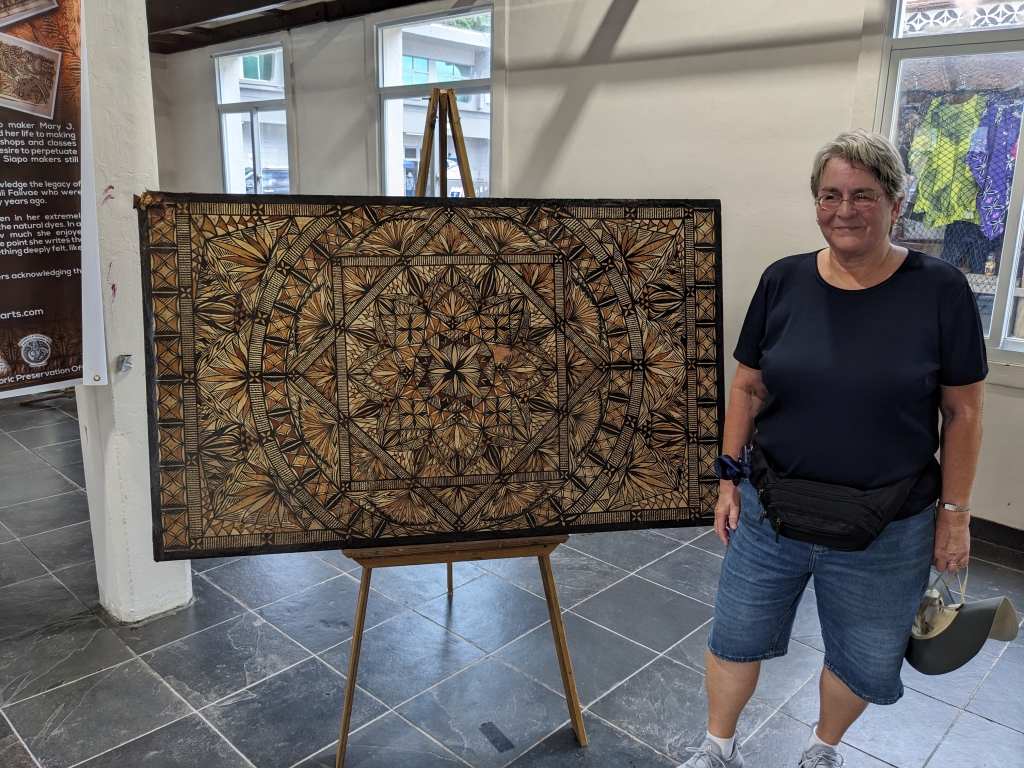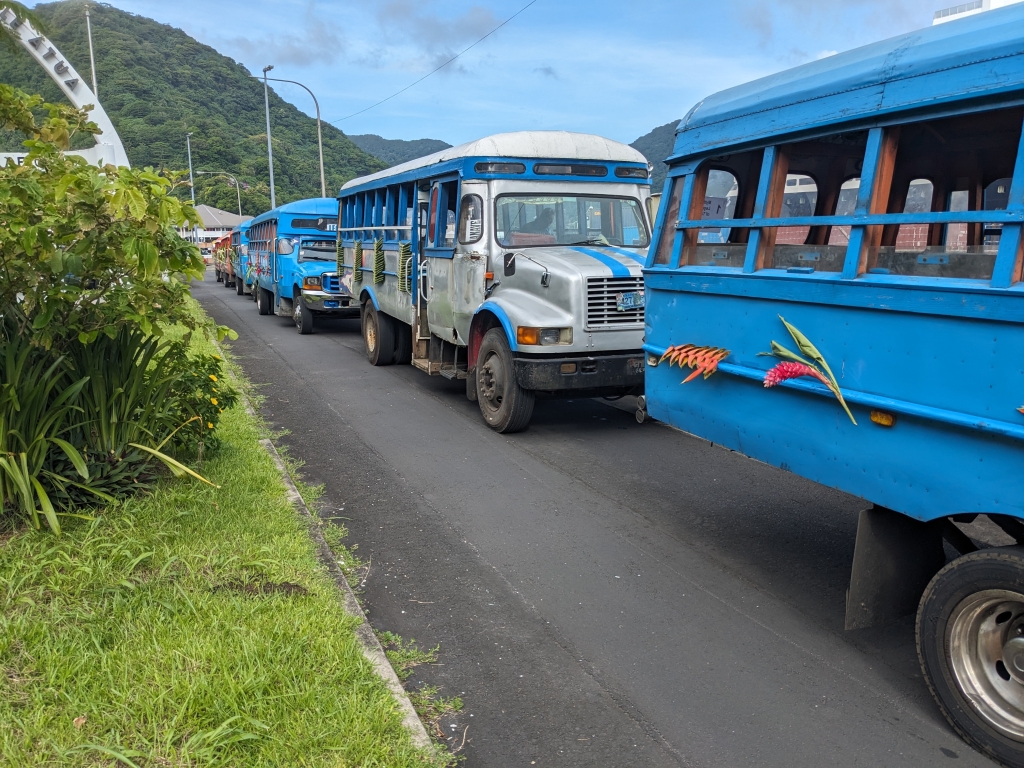I feel like this was our first real stop. There isn’t a ton of stuff, but what there is, is breathtaking.
Back around 1900, the Samoa was organized into families or villages. Each had a chief. Each chief wanted to be the big chief. Being typical people, they settled their differences with ongoing war. Samoa was an important stop for sailing ships trading with the East. With inhabitants already divided, conquering was pretty easy. (It sounds to me like the best description for political organization back then would be not families but clans.) The US took Eastern Samoa, the Germans Western. From there the history is atypical. Both countries maintained their Polynesian culture. Almost all Samoan residents speak Samoan fluently. In American Samoa, villages or families manage their part of the island, especially when to fish and how many to take. American Soma has a large tuna cannery. They are a US protectorate which allows them to export canned tuna without paying duties. They have their own constitution and laws. In the on-board presentation, the presenter used the description “island quality, mainland prices”.
As we approached American Samoa, I saw two things. Samoa is a beautiful verdant green, as shown by the first picture. The main mountain blocks rain clouds, dumping rain on the windward side. While it didn’t rain while we were in town, you can clearly see how the effect works in the second picture.

We left the ship early to beat the heat. (Mid 80s and extremely high humidity, even early in the day.) In the disembarkation area, the local tour guides were quite aggressive, nearly blocking my exit with large cardboard signs. We only wanted to see three things, all a short walk from the pier, so we resisted the island tours. As you will see, we’re glad we did. It was impossible to take a picture in the disembarkation area, but I did get a pic of the tour busses used for the second wave of tourists. When we got back to the ship, all these busses were filled with tourists.
We stopped at a few places and didn’t see much of interest until we got to the National Park Visitor Center. They have a movie that shows how they make Siapo cloth. It was a long movie, maybe 20 minutes. We enjoyed the entire movie. One busload of people came in near the beginning of the movie, and had to leave before it got to the most impressive part. Making Siapo is an amazing process, requiring untold woman-hours of effort. Making a Siapo requires many steps. Each step requires care, talent, and even strength. After we watched the movie, we saw an excellent and impressive example you see below.

The main attraction turned out to be a private museum which was a total bust except for one exhibit — a museum quality example of Siapo cloth you see below. It blew us away. “Island Quality” is probably an accurate description of the cheap tourist shops that line the street, but this Siapo is simply amazing.

I hope this finds everybody doing well.

